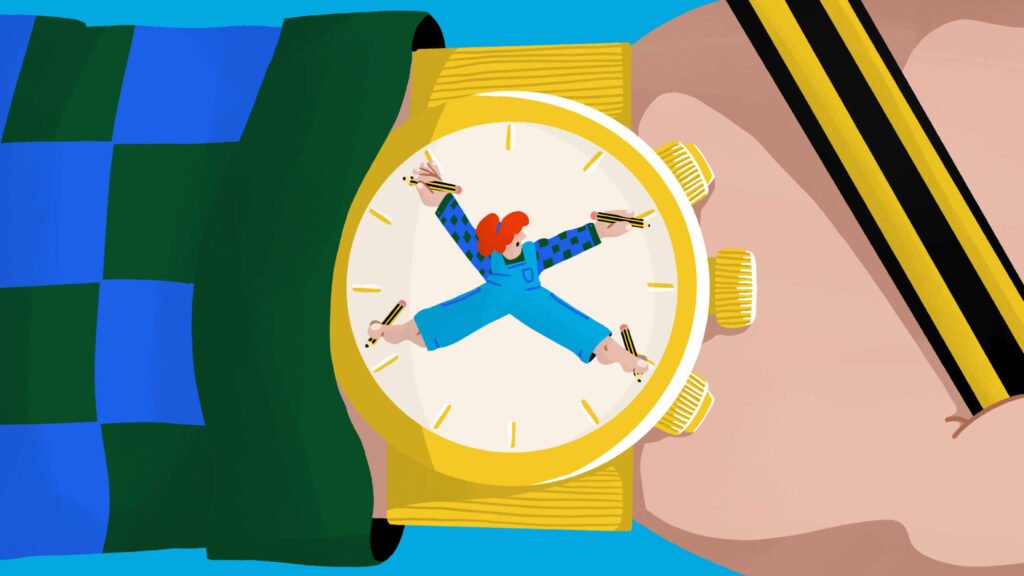Let me be honest here: I’m really bad at getting out of the house. In fact, I can go 2–3 days of staying in, chained to my desk for 8–9 hours without taking a break. This isn’t a humblebrag, I’m not proud of the fact that I struggle to tear myself away, it’s just how it is.
While there are of periods where I am so busy that I have no choice but to power through (or that’s how it feels) there are other times where I simply don’t go out because I either don’t feel like it or because it’s not something I even think of doing.
The problem is that by the third day of staying in, my productivity nosedives, my mood sours and the stress & anxiety kicks in. This ultimately means I get less done and am even less likely to take a break. It’s a vicious cycle and one that I expect most freelancers are familiar with.
The burden of freelancing is that there’s always more work to be done, never enough time to do it and rarely anyone to share the burden with. It means that taking time away from your screen is difficult and it’s easy to fall into a habit of going to your desk as soon as you wake up – or even opening your laptop while you’re still in bed!
Believe it or not, there is a better way, and here’s the secret: not working is the key to getting more done… In other words, our brains need a break in order to work at optimum performance and one of the easiest ways to have that break is to spend time away from your desk.
While staying indoors will likely drag on your mood and motivation, there’s also another danger as sitting and laying down for long periods of time can increase the risks of developing chronic health problems, such as heart disease, diabetes and even cancer. Pretty scary right?
Now, after two years of freelancing, I’ve started to realise that I need to make more of an effort to get out and recently I’ve succeeded. It has, however, taken considerable effort and while I don’t manage to get out every single day, I am noticing the positive effects of spending more time away from my desk.
So let’s take a look at some of the different ways you can get out of the house for the sake of improving your mental wellbeing, physical health and general productivity.
Literally walk away
When you’ve got a to-do list as long as your arm, taking a walk is going to feel counterproductive. It’s hard to relax while walking around with little else to do other than think about your inbox filling up and all the things you planned to have done by 5:30.
To combat this, I’ve started adding “go for a walk” to my list of things-to-do, so that when I get home I have that satisfaction of ticking it off. If you really struggle, you could even set an alarm or a calendar reminder to get your body moving.
While I’m lucky to live near a couple of parks, this wasn’t always the case and I appreciate that not everyone shares this luxury. However, there are still ways to make a 30-minute walk enjoyable. For example, you could explore the quieter streets around your neighbourhood, treat yourself to a snack from your favourite bakery, take a hot drink with you in a travel cup or simply listen to some chilled music or a podcast.
I do think it’s important to avoid looking at your phone too much, the whole point of this is to give your mind time to gather your thoughts, which I’ve found to be the true beauty of work-time walks. Moreover, my brain magically provides answers and solutions to whatever challenge I’ve been struggling with that day, week, month or even year.
For example, last year I desperately wanted to start my own newsletter but I had no idea what to write about. Despite paying for webinars hosted by some of the most successful Substackers and subscribing to premium newsletters that I thought would have the answers, it took me six months to land on an idea that stuck — an idea that was the result of a walk.
A change of scenery
Going for a walk is one thing but being around people can really lift your spirits. I also find that working in a busy coffee shop with the buzz of people chatting away in the background is a great way of staying focused. Everyone is different but I’ve always found that working in public spaces does wonders for my productivity. In fact, I’ll often listen to ‘coffee shop background noise’ playlists on Spotify to recreate this atmosphere at home.
The downside is that working in a coffee shop usually means you need to spend money and I suspect that the longer you’re there, the more you’ll feel obliged to spend. However, there are a number of platforms such as Othership and WorkClub that give their members the ability to book ‘free’ workspaces (usually a cafe, pub or hotel lobby) for around £10 per month.
Such memberships usually include an unlimited number of bookings for venues all across the country (though with a London focus) and members get a free drink or discount at most venues. Othership also offer their members free access to a range of events, including their weekly Cowork & Brunch meetups that take place in London, Manchester and Bristol. For me, these events have been a great way to meet new people and even clients!
Of course, if you’re not in a position to spend money getting out, you might consider working from your local library and if you’re based in London, open institutions such as the Barbican and the Southbank Centre can be good places to work from for a few hours without needing to pay for anything.
Take a lunch break
For those days where you can’t bear the idea of going outside, whether that’s because there’s a blizzard, you’re unwell or you’re simply not feeling up to it, it’s still vital that you find time away from your desk.
Taking a lunch break, even if it’s just half an hour, will still give your brain the break it needs and deserves! It will also force you to stand up, which is important as any small amount of activity counts towards a healthier lifestyle.
For the really really busy days where even 30 minutes is just too much time, try using the Pomodoro Technique. If you’ve not heard of it, this is where you work in sessions of 25 minutes followed by a 5-minute break. Then, after every 4 or 5 work sessions, you take a longer break of 15-20 minutes.
It’s a simple but surprisingly effective technique that many people swear by and there are lots of Pomodoro Timer apps for both iOS and Android. The important thing here is that you use those short and long breaks to stand up and walk away from your desk. Simply disrupting the amount of time you spend sitting down can really improve your health.
It might take a while to effectively adjust your workflow, but the benefits this will have on your mental and physical wellbeing, as well as your productivity, will make it well worth it.




